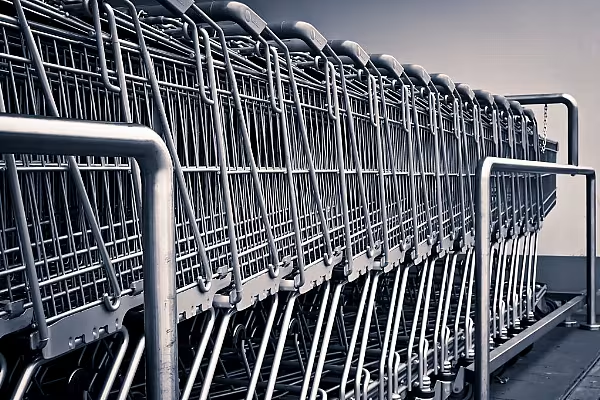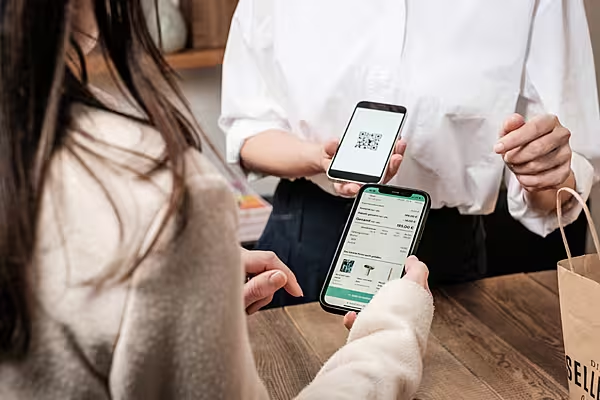Brian Hume, managing director at Martec International, examines how retailers are responding to the changing consumer landscape as COVID-19 lockdown measures ease.
During the lockdown, shoppers got used to ordering online and not being able to visit stores, except for essentials like food and medicines.
Those that did visit stores did not find the experience pleasant. They were prepared to queue for essentials, but this does not mean they will queue for anything else. Many also got used to working at home and a good number upgraded their broadband.
Omni-channel retailers and online pure plays have seen significant increases in online sales, in some cases well in excess of 100%. Some of this will go back to stores, but a lot of it won’t.
While there is no reliable survey evidence yet, anecdotal conversations with retailers and scans of the retail news, suggest that perhaps 20% to 25% of stores will not re-open or will only re-open long enough to exit from leases. About 20%-25% of store employees will very probably lose their jobs.
As one example, Inditex (Zara and related brands) has indicated that they plan to close approximately 1,200 of their roughly 7,000 stores between now and 2021.
How Do You Re-Open?
So how do you manage the first few weeks and months of re-opening, giving your business the best possible chance of recovering profitable levels of traffic and conversion rates? Obviously you will make the store as safe as possible for shoppers.
This includes things like:
• Plexiglas shields at registers
• Contactless payment to avoid handling cash
• Encouraging customers that can to pay by smart phone
• If you have POS terminals close together, keeping every second terminal closed
• Not letting shoppers use any kind of touch screen
• Visors and face shields for store associates
• Possibly providing face masks for customers
• In store social distancing, which may necessitate widening store aisles (and therefore carrying less merchandise)
• Possibly one way traffic flow depending on store size
• Hand sanitiser at the entrance and various locations round the store
• Social distance markers in the queueing area outside the store
• Limiting the number of shoppers in the store at one time, which may mean no family groups
• Have a greeter at the door to control the number of customers coming in
• Controlling flows at entry / exit points to ensure social distancing requirements are observed
• Closing bathrooms, fitting rooms and cafeterias
• Discouraging shoppers from picking up things they don’t plan to buy
• Quarantining returns for two to three days before putting them back on the shelf
• Having staff continually sanitise baskets, carts, shoes that have been tried on, self-checkout terminals, etc. and ensure that shoppers are aware of and use the cleaned items.
• In some cases, admit shoppers by appointment only
• Browsing may have to be limited. Some retailers are giving 10 minute time limits.
• If you provide home delivery, make sure the procedures are Covid-Safe
• Make sure staff are fit to work (as far as possible, e.g. temperature checks, no obvious signs of coughing, etc.)
• Some retailers are disabling weight checks on self-checkout terminals and having more staff there to assist users
What Then?
While the above is laudable and very important, it’s not nearly enough! The shopping experience will still be unpleasant. One thing matters more than all of this. The customer service must be excellent.
Customers have to leave the store having fulfilled the important parts of their shopping mission. Only by completing their purchases will customers believe that the rest of the experience is worth tolerating. So this is the first aspect to concentrate on.
Retailers know that they can’t be in stock of everything all the time and the customers understand that too. However, retailers need to be in stock of all the basics all the time, as far as they possibly can.
Being in lockdown will have haemorrhaged cash and without access to deep funding or state aid, it will constrain the ability of retailers to buy new merchandise, especially new season merchandise. Fortunately, for most retailers of non-essentials, basics represent 60% or more of store sales.
Hence on day one of opening, make sure you have deep stocks of all the basics wherever possible. Then, while store traffic and consumer confidence is slowly building, and more consumers decide to try shops again, implement the systems that will allow you to maintain high stocks of basics, so that you can build a reputation and sustain it.
As you progress, exchange excessively high stock levels for world class systems support. This means using advanced forecasting and replenishment systems so that you can provide high in-stock service levels on smaller inventories. Using advanced systems may not be the challenge you once thought.
A lot of the clever mathematics is embedded in the applications and you don’t need to understand it to use it well, though a basic understanding does help.
Also, because some of these systems are now available from cloud service providers, you can start in one or a few stores and build up at the pace you can manage.
Store Replenishment
Look at how you can speed up store replenishment. If you can sensibly replenish every store every day, you can achieve service levels as high as replenishing the same stores every two or three days with lower stock levels. In essence, you are trading off increased expense costs against reductions in safety stock.
Since safety stock is about 60% of total stocks in most retailers, reducing stock can release big chunks of cash to invest in new merchandise. Hence it may make sense to spend a bit more on physical store replenishment. Do the sums to see how well it works for you.
RFID Technology
Also, thinking ahead, consider RFID technology, if your unit prices for products make it a viable proposition. With RFID, you can sustain very accurate stock levels at store/SKU level of granularity and with minimal store labour.
This means that you can satisfy many click and collect orders (BOPIS in the US) from store inventory rather than having to ship every click and collect order from the warehouse, just because you can’t rely on store level inventory records today. Again, cloud service providers in this field make the idea more feasible in this environment and you can test it easily in a small group of stores.
Assortment Planning
Range or assortment planning will become more critical now than ever before. Consumers’ initial buying plans are likely to be very different from their long term intentions or past buying habits. There will be less social shopping.
More shopping journeys will be planned in advance and consumers will make wider use of shopping lists. They will suffer the inconvenience of all the Covid safety measures to get the things they really need. When you open you have to sell the stock you have, but as you start recovery you will need to adjust assortments to meet the new reality. This will take time and will be a moving target.
As the level of Covid infections retreats more consumers will relax, Covid safety practices will ease, more browsing will be acceptable. Assortments may be able to widen again. Hence assortment planning will be a lot more than an every season exercise. Assortments will need continual adjustment.
Adjusting Volume
Grocers are having a bumper year for food sales as so many restaurants have been closed for at least a quarter of the year. Now they are re-opening, they will not have the capacity they previously had due to social distancing regulations, hence volumes will not recover to last year.
If you prepare category plans for grocery, you will need to adjust history to get a measure of future demand
Local Manufacturing
Another lesson from the pandemic is that we have to bring some manufacturing home. The most obvious examples are toilet rolls, hand sanitiser, certain pharmaceuticals and personal protective equipment (PPE). We also have to work with domestic manufacturers to ensure sustainable supplies of things like flour packed for consumers rather than bakeries.
Supply difficulties, especially from China, became a major problem when every country affected by the pandemic was competing for the same manufacturing capacity and cost prices on things like PPE rose by orders of magnitude.
This, coupled with the growing use of tariffs and the continuing developments of practical and affordable robot technology, makes it more realistic to bring some manufacturing back home. Governments may mandate some changes to improve the supply security and resilience of the country.
Reviewing sources of supply and whether adjustments are necessary is an important task in the recovery.
What Does This Mean For CPG Manufacturers?
Retailers will very likely stock fewer products with more focus on basics. Therefore consumer goods manufacturers may experience a high level of de-listing items than historically was the case. Store closures in scale will imply negative growth. This may be offset to some degree in categories that spike in sales as consumers focus more on basics.
Many consumer goods companies create planograms and recommended assortments for their retail customers to use (edited or not). Some food categories have grown, for example, as people eat out and consume takeaways far less, and cook more at home.
Planograms will now need to fit to the amended space plans and fixture constraints that retailers implement. Those manufacturers providing category management services or vendor managed inventory (VMI) services will need to recognise the new reality and adjust their services to suit.
But, as restaurants re-open, the balance will change again, though it is unlikely to go back to the old normal any time soon. Hence planograms and category plans will need more frequent adjustment.
The mix of branded products and private label may change, especially as growing unemployment constrains many consumers’ spending power and retailers feel more compelled to focus on price in order to get customers back into the stores.
This will put more pressure on value lines and discount store formats are likely to take a bigger market share. Manufacturers will need to consider how to react to this. Is this the time to start rolling out wider or larger scale Direct to Consumer plans? Do channels like Amazon become more attractive? Do subscription services?
You may feel the need to support your suppliers more, especially the smaller ones with less financial resources. So Days of Purchases Outstanding may grow at the same time that Days of Sales Outstanding is growing. Inventory levels may also grow at the same time, placing extra pressure on working capital. Chief Financial Officers will almost certainly need to keep a careful eye on cash flow management.
This will drive internal pressures to make cost savings wherever possible and to back pedal on investment projects that made sense before the pandemic, but perhaps aren’t the same priority now. Indeed, cash flow may become a much bigger priority than sales growth in the near term.
All consumer goods companies create account plans for their larger retail and wholesale customers. This is an important time to identify all the changes that might occur and determine how these might affect your account plans.
Rather like the earlier comments about retailer merchandise and assortment planning, it is likely that you will need to revise account plans much more frequently for some time to come.
© 2020 European Supermarket Magazine – your source for the latest retail news. Article by Brian Hume, Martec International. Click subscribe to sign up to ESM: The European Supermarket Magazine.














